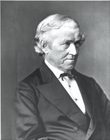Cooke and Wheatstone's Electric Telegraph: Difference between revisions
From ETHW
No edit summary |
No edit summary |
||
| Line 1: | Line 1: | ||
'''''This article is a stub. You can help the GHN by expanding it.''''' | <p>'''''This article is a stub. You can help the GHN by expanding it.''''' </p> | ||
[[Image:Wheatstone.gif|thumb|left|Charles Wheatstone]] | |||
[[Category:Communications]] [[Category:Telegraphy]] | <p>London, England. On 12 June 1837 William Fothergill Cooke and [[Charles Wheatstone|Charles Wheatstone]] received a patent on electric telegraphy; this was the first English patent for an electric [[Telegraph|telegraph]]. On 4 September the first message was sent on a line Cooke and Wheatstone built from London (Euston Station) to Camden Town. Also on 4 September S.F.B. Morse demonstrated electric telegraphy over a distance of 1700 feet at New York University. </p> | ||
<p>[[Category:Communications]] [[Category:Telegraphy]]</p> | |||
Revision as of 16:18, 10 May 2010
This article is a stub. You can help the GHN by expanding it.
London, England. On 12 June 1837 William Fothergill Cooke and Charles Wheatstone received a patent on electric telegraphy; this was the first English patent for an electric telegraph. On 4 September the first message was sent on a line Cooke and Wheatstone built from London (Euston Station) to Camden Town. Also on 4 September S.F.B. Morse demonstrated electric telegraphy over a distance of 1700 feet at New York University.
